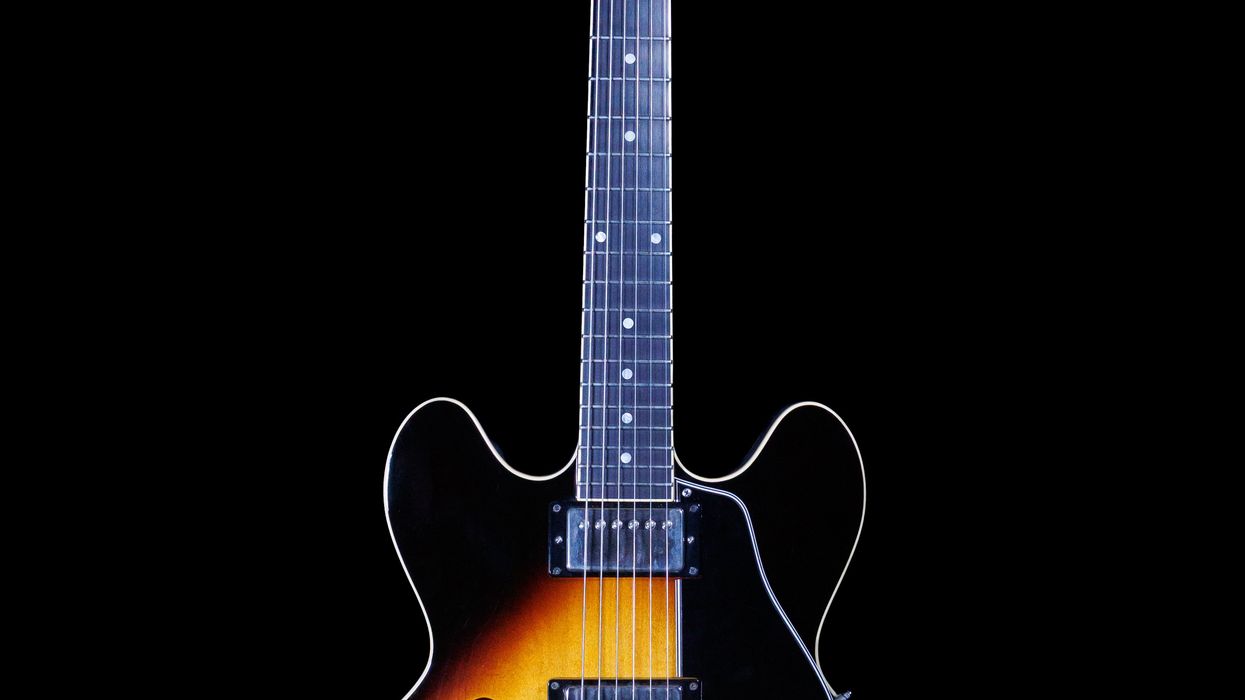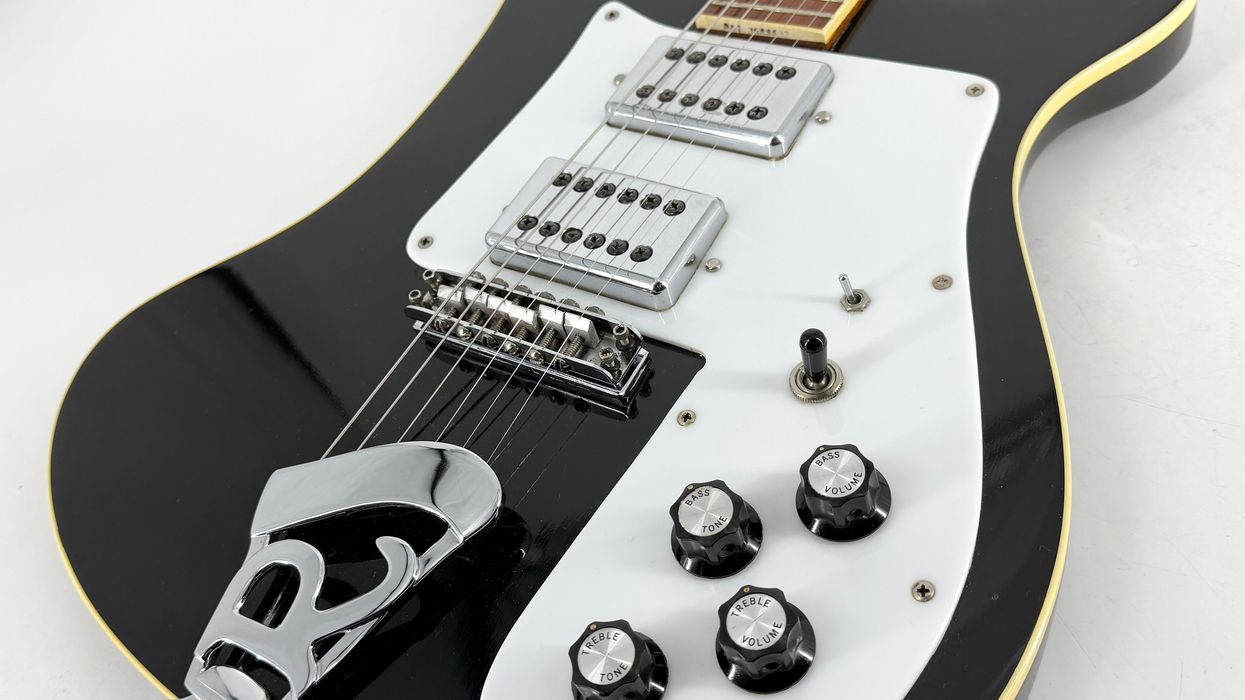As a resonator guitar player and designer, I get giddy when an oddball resonator comes through the door. I've loved these old hub-cap guitars ever since I was a kid, which I mentioned in the history of resonators I wrote for Premier Guitar's June 2018 issue ("Resonator Guitars 101"). I've worked for Dobro, Sho-Bud, and Washburn (where I have signature models) over the years and had my own Owens brand at one time. So, of course I got excited about this 1964 Supro/Valco Res-O-Glass Folkstar with a period DeArmond gold-foil pickup. It has a hint of Airline, too, but more on that later.
Back in '64, when it was priced at $137.50 new, Supro advertised this 6-string as "the most powerful non-electric guitar of them all! The original self-amplified guitar." Of course, that's hyperbole, because that was without the crucial addition of the DeArmond, which may have been added by the guitar's original owner. More on that later, too.
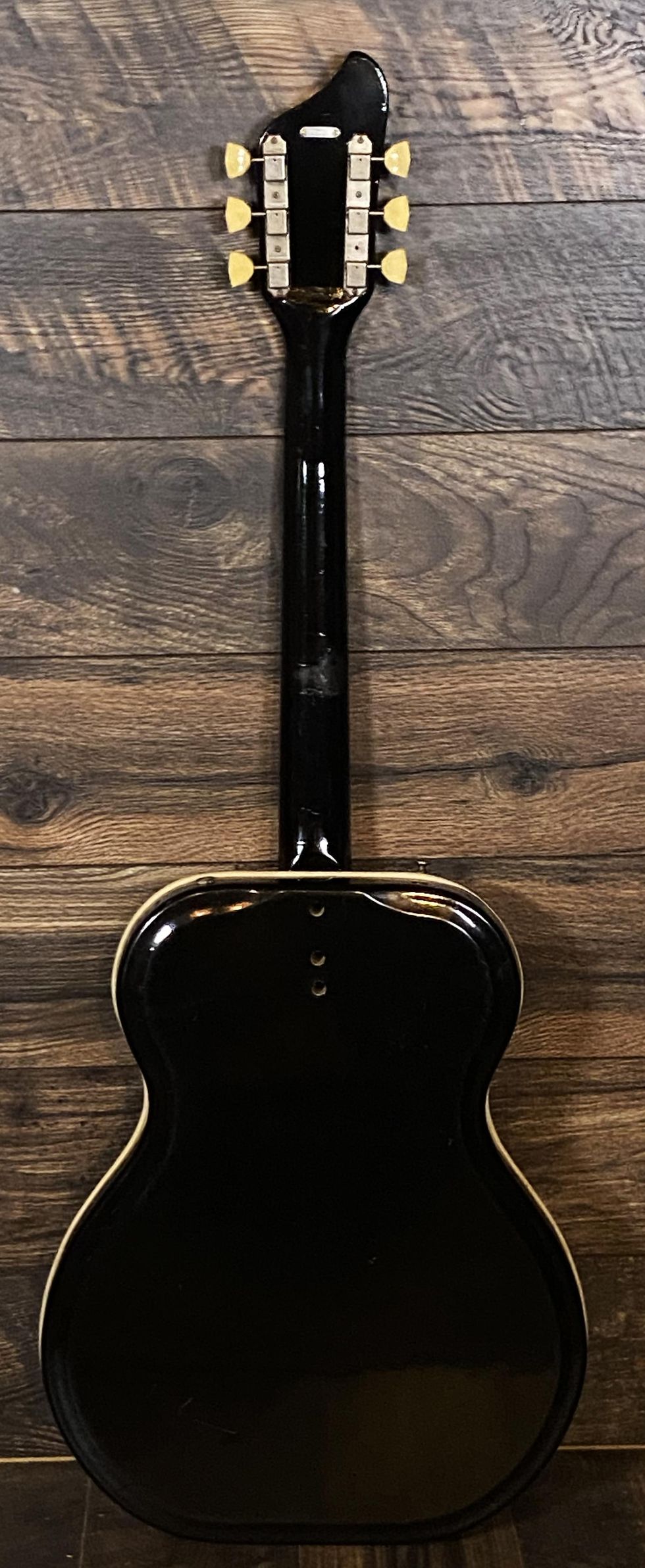
This example was assembled at the Valco factory as a hybrid of Airline and Supro body parts. During a slight neck repair at Nashville Used and New Music, its original red neck was refinished black to match the body.
Meanwhile, you want some background on Valco? Well, that history of resonators story I mentioned has plenty. But what's important for understanding the roots of this month's guitar is that Louis Dopyera, one of the founding brothers of Dobro, was a co-founder of Valco. And the Dopyeras were innovators who saw the trend toward round-neck electric guitars pretty much when the first electric lap steels hit the market in the early 1930s. That same eye for the new put fiberglass on their radar in the 1950s, when it came into its own with Corvettes, surfboards, and other iconic pop-culture designs. One more essential piece of information: Valco specialized in making guitars and amps for other brands—most notably Harmony, Kay, Supro, and Airline—until it closed in 1968.
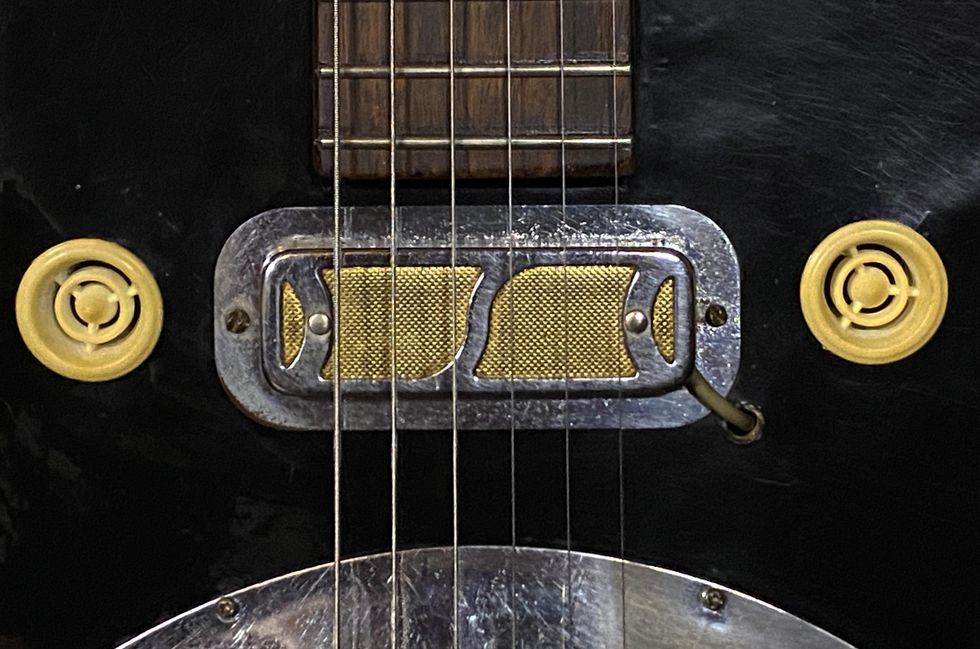
Vintage DeArmond gold-foil pickups like this were a popular modification for these guitars in the '60s. Plastic-screened soundholes were just another of Valco's cost-saving measures.
Now let's get back to our Valco-made Supro Folkstar. It has a thinline body with a single resonator cone under a distinctive cover plate—are those the tips of tridents or sideways Es?—and two small round soundholes with cream-colored plastic screen covers in the upper body. (On a Dobro, those screens would be metal.) That body, with its beveled, molded top providing a slightly arched look, is made of two pieces of the fiberglass material called Res-O-Glass, with a rubber binding seam in the center to attach both halves and inhibit internal rattling. The Kord King neck is described in the catalog as magnesium-reinforced wood. It has the classic "Gumby"-shaped headstock that's a Supro signature, and Kluson tuners with oversized butterfly-style buttons. Another advantage that the always-budget-aware Valco saw in Res-O-Glass—besides its light weight—was the ability to use colored resin, reducing the amount of finishing necessary. This Folkstar model came in two colors: red for the Supro model and black for the Airline model. The latter sold through Montgomery Ward stores and catalogs. As cool as Folkstars look, they don't sound good at all—at least as the acoustic instruments they were intended to be. Their tone is muted, with almost no sustain. That's why so many of these vintage axes have pickups installed.
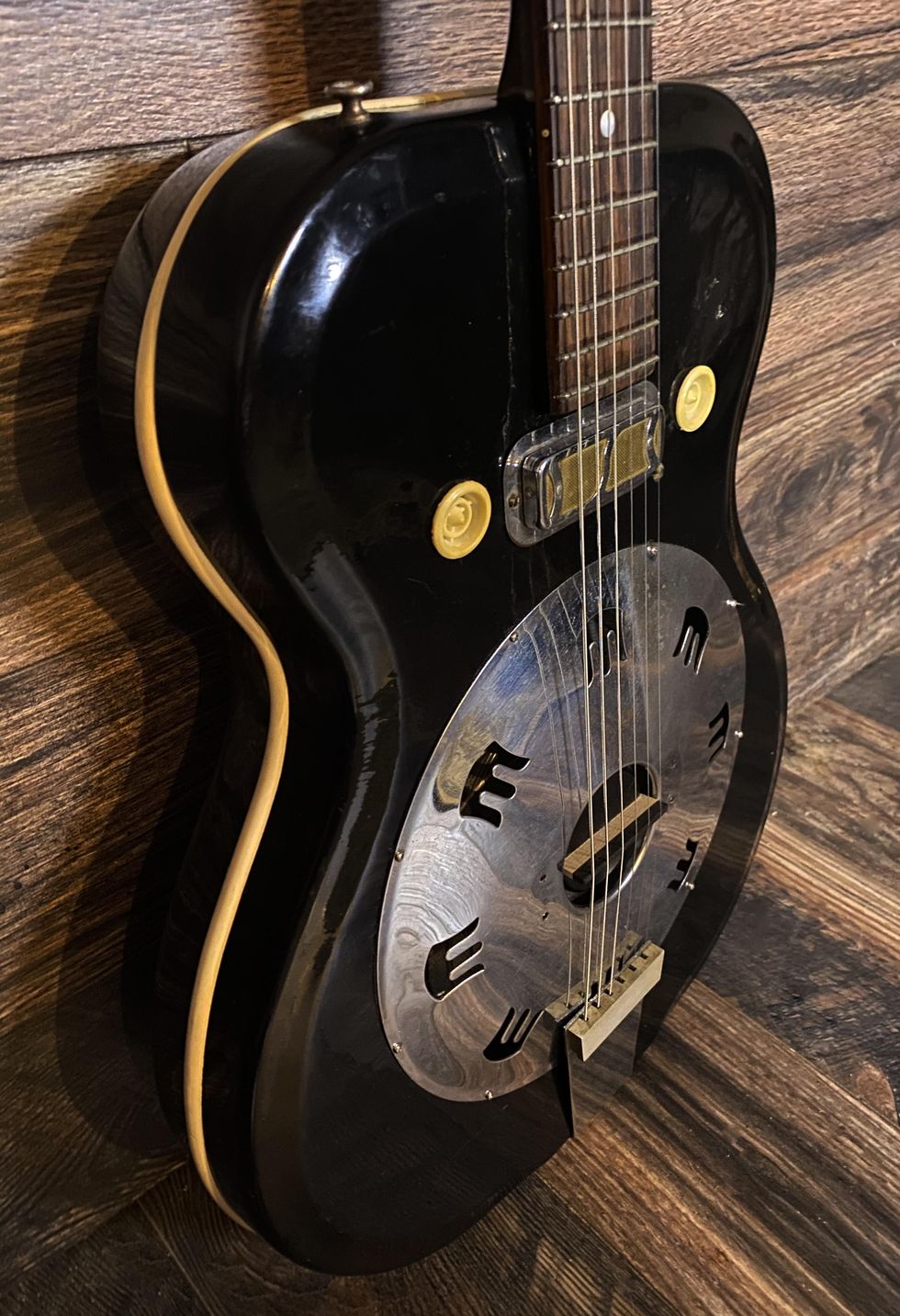
The rubber binding seam in the middle of this model was used to attach both halves of the body and decrease internal rattling.
Here's something weird: While this guitar's body has the black finish of an Airline model, that's clearly a Supro logo on the headstock. Seems crazy, right? But one of my gigs at Dobro was working as the company's archivist, where I learned that it was not uncommon for them to use parts from one line on another, or for them to make a custom one-off. Gibson also did this back in the '40s, '50s, and '60s—or used leftover parts from one production era on a new generation of instruments. When this Supro/Airline hybrid arrived at our shop, the neck was actually red and had some slight damage. When it was repaired, we refinished it black—but given that it already had the pickup installed as a mod, that refinishing shouldn't influence its value, which we estimate at about $1,199.
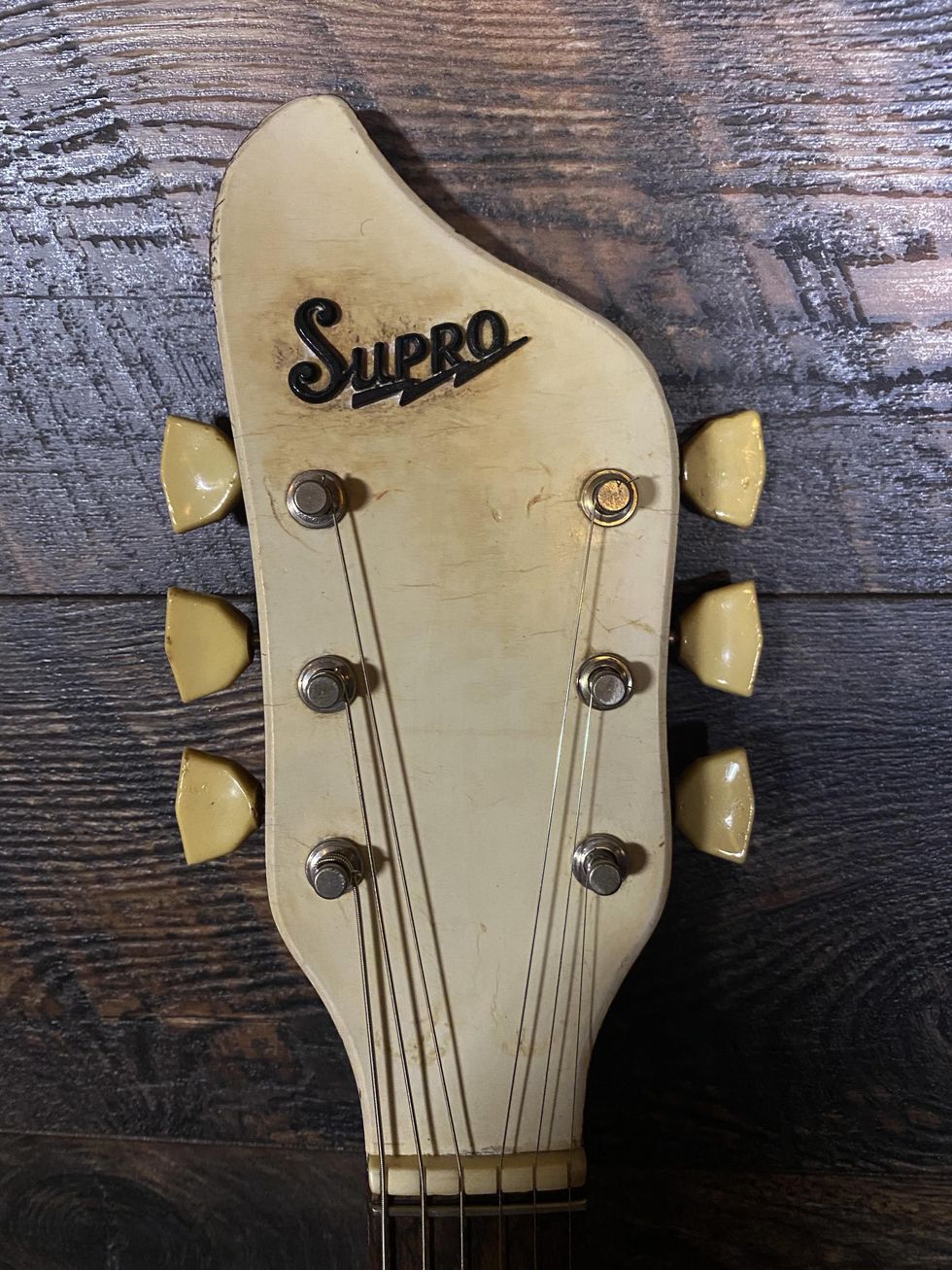
While this instrument's black finish says Airline, the headstock's "Gumby" shape and logo scream Supro.
The DeArmond gold-foil is where the magic really happens with this guitar. And the truth about these old pickups is that no two seem to ever sound the same. But this one brings the instrument to life in a way that would please fans of North Mississippi hill country blues or Ry Cooder soundtracks. I hope whatever bluesman or blueswoman—or maybe even voodoo priestess—gave this guitar that pickup also got all the mojo he or she wanted out of it. And I think there's still plenty left for the next owner.
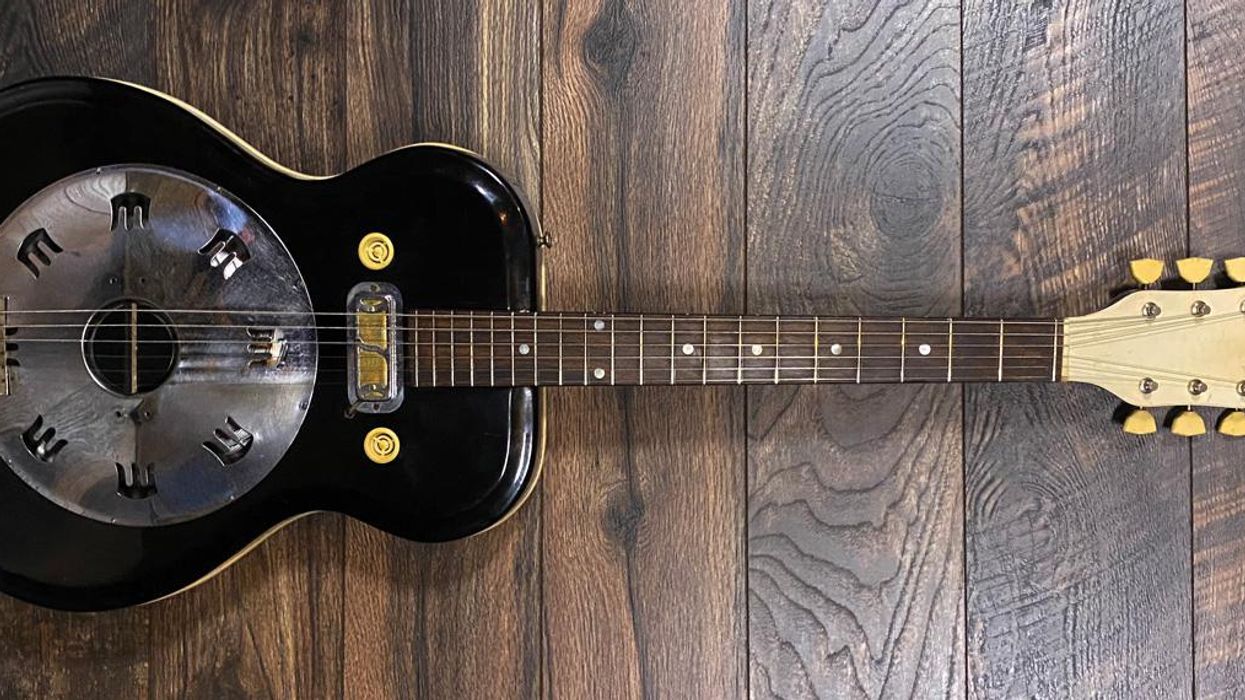

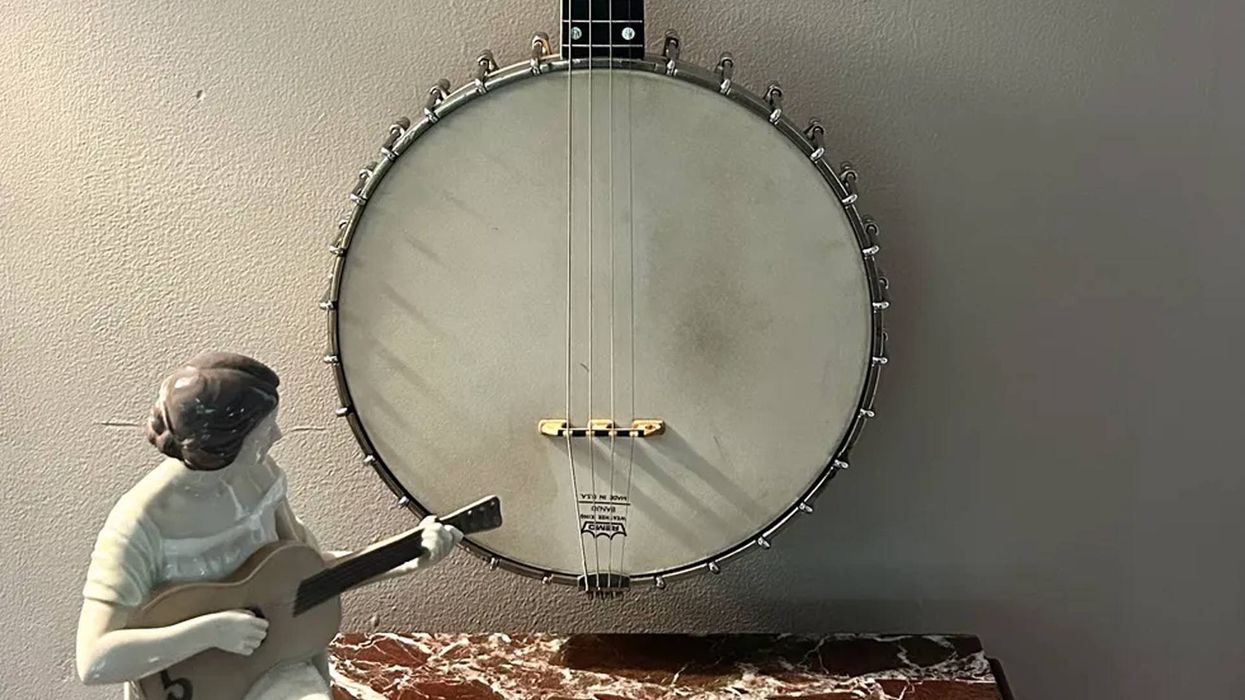
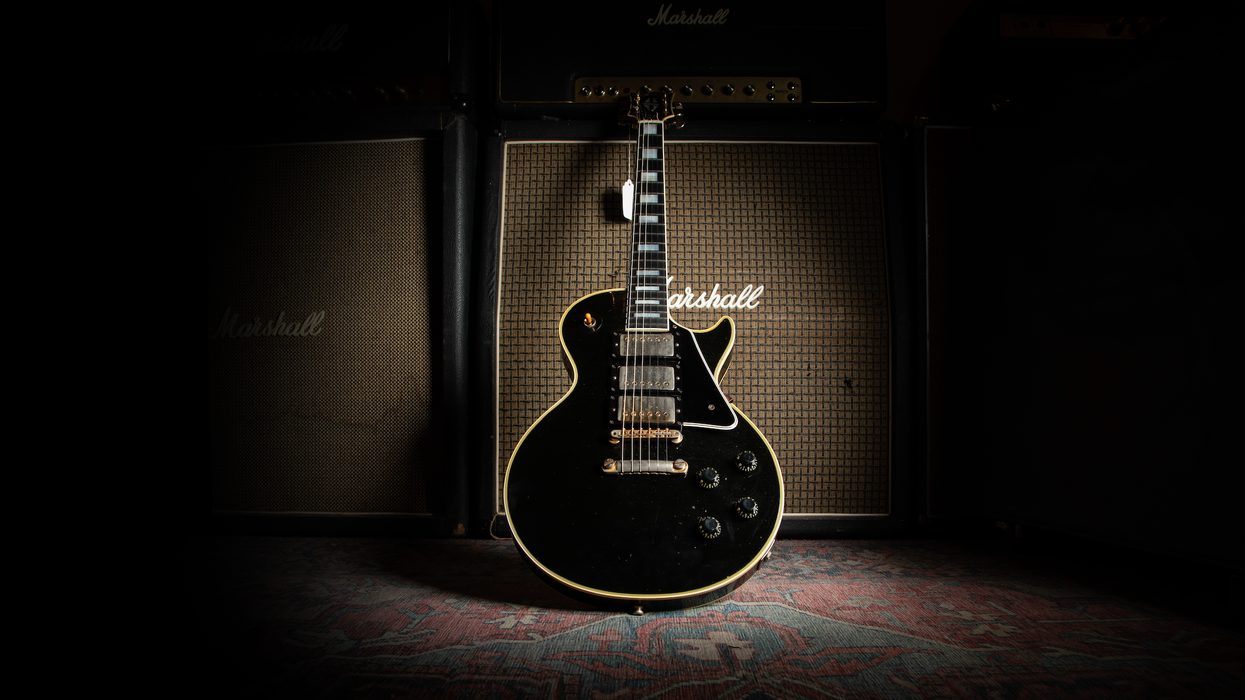
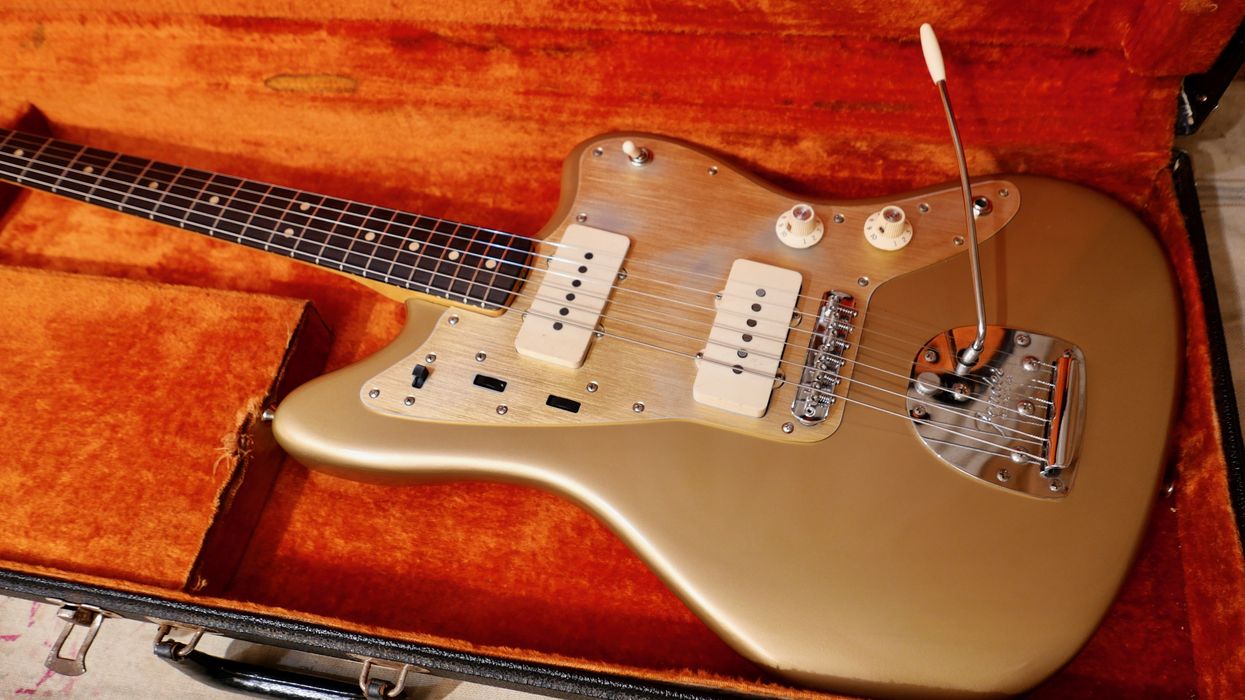
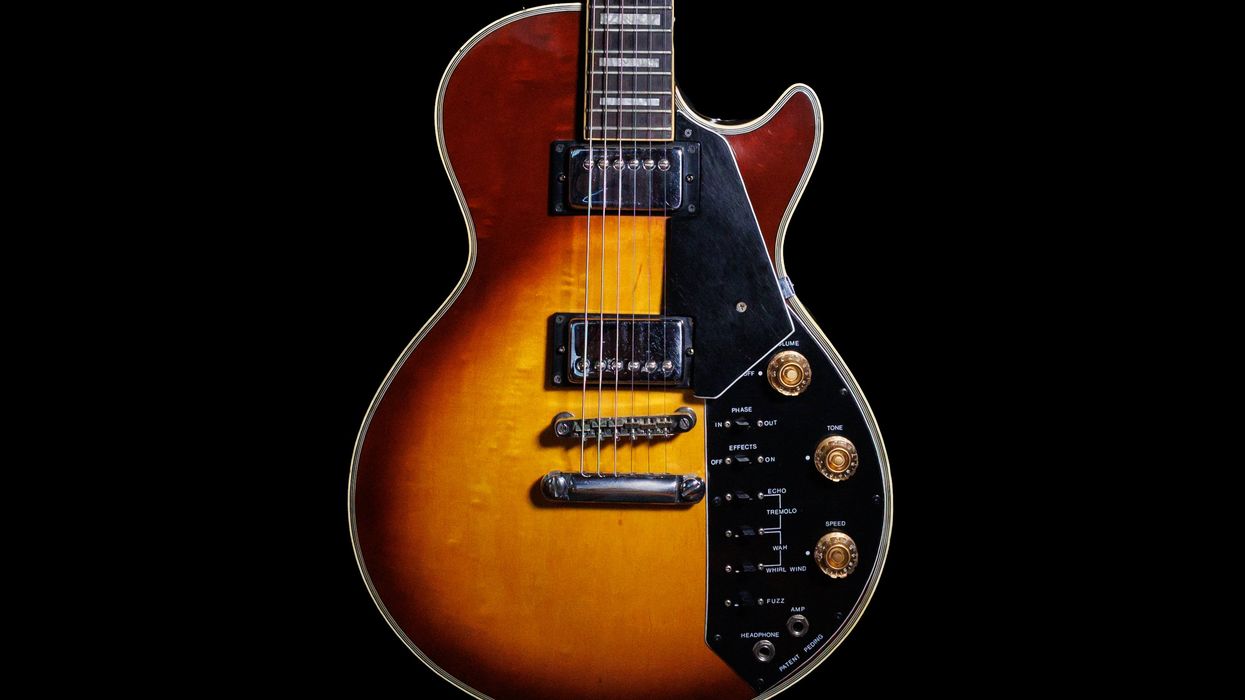

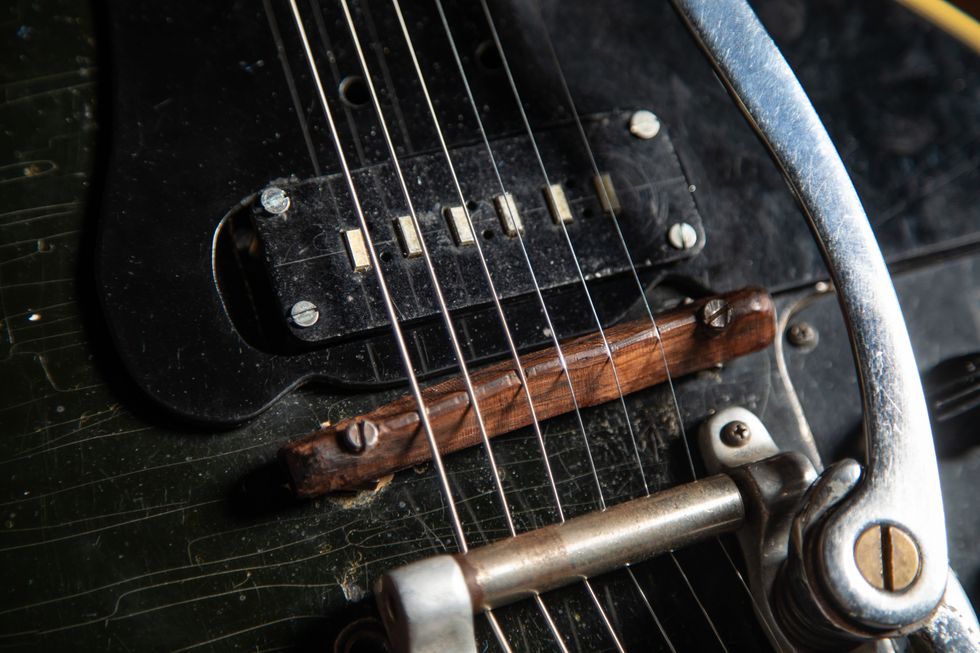






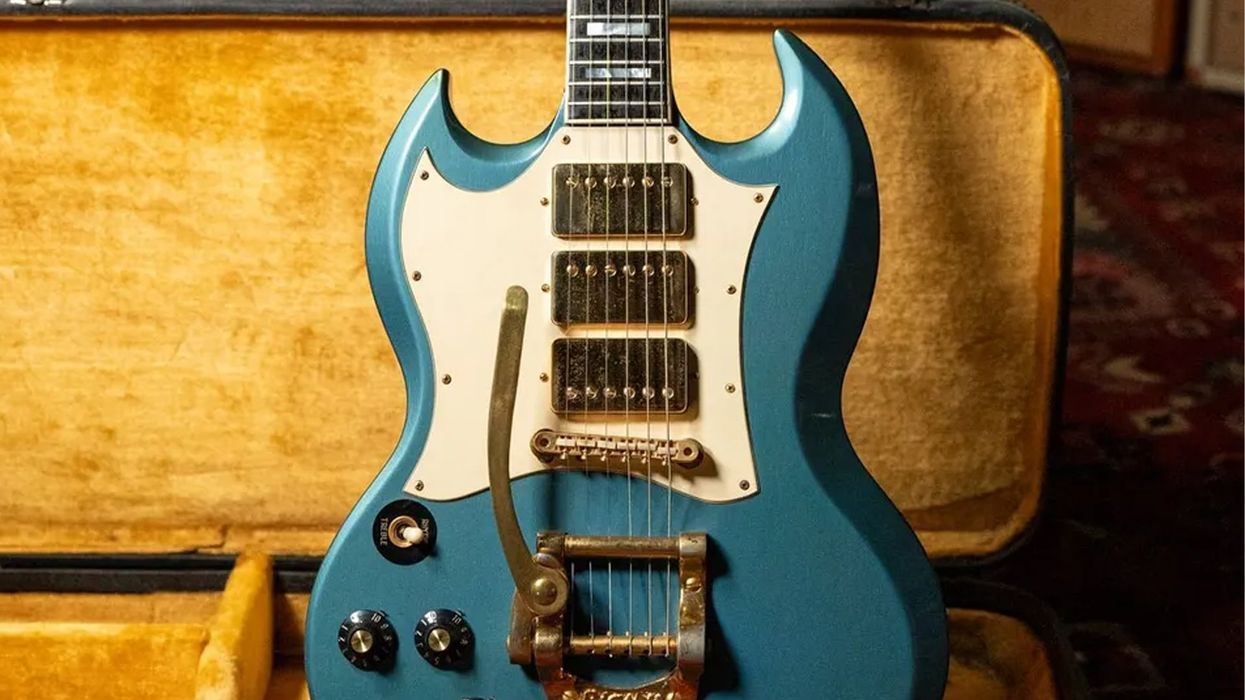

 Whether or not Jimi Hendrix actually played this guitar might come down to how lucky its buyer feels.Photo courtesy of Imperial Vintage Guitars Reverb Shop
Whether or not Jimi Hendrix actually played this guitar might come down to how lucky its buyer feels.Photo courtesy of Imperial Vintage Guitars Reverb Shop